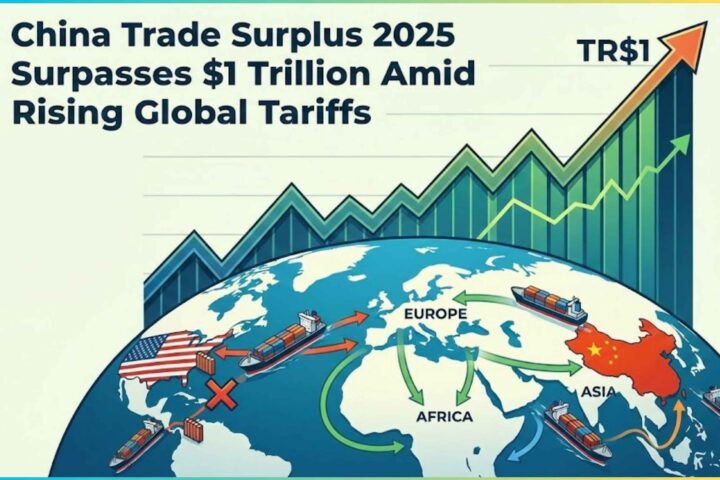Introduction: Why this move matters
China has withdrawn its long-standing tax advantage on investment gold, raising acquisition costs for buyers in the world’s most influential bullion market. This decision lands at a moment when gold has been one of the few confident safe-haven assets amid volatile equities, uncertain rate paths, and currency pressures. The policy shift forces traders, retail buyers, and global markets to recalculate demand strength and price direction.
Gold demand in China has shaped world pricing cycles for years. When Beijing changes tax treatment, global finance listens.
Policy shift: What exactly changed
China’s policy removed the preferential tax treatment on investment-grade gold bars, coins, and government-recognized bullion products. Investors and jewelers who once enjoyed reduced tax burden will now pay higher effective costs per gram or per ounce.
This is not a small administrative move. The tax break supported one of the largest physical gold buying markets on earth. Removing it marks a meaningful shift in the government’s financial policy stance toward precious metals.
Cause: Why China did this
Several forces appear to sit behind this decision.
1. Curb speculative demand
Gold saw rapid buying by retail investors in China as currency volatility and property market uncertainty pushed households toward hard assets. Policymakers may be signaling caution against overconcentration in bullion.
2. Stabilize capital flow and currency positioning
China continues managing currency pressures and capital allocation. Higher gold costs can reduce gold hoarding and support more controlled capital behavior.
3. Revenue and fiscal considerations
With continued macro uncertainties and policy spending priorities, removing tax relief expands fiscal room without major political cost.
4. Align with broader financial discipline
The government has continued to tighten loose financial channels in different sectors. Precious metals were not going to stay untouched forever.
Immediate effect: Demand friction inside China
The first visible outcome is buyer hesitation.
Retail investors who purchased gold bars and coins as a savings tool will feel the price pinch. Jewelers who rely on bullion inventory now face higher working costs. Consumer gold purchases had been rising across 2024 and early 2025. This policy acts as a speed bump.
Institutional buyers and central banks inside China may continue absorbing inventory, but retail volume is likely to slow near term.
Market reaction: Pricing and sentiment shift
Prices did not collapse, because global investors still see gold as a hedge against policy uncertainty, trade tensions, and currency risk. However, price charts show hesitation and trading desks have widened short-term volatility expectations.
For refiners and dealers in Dubai, Singapore, and London, the focus shifts to how much Chinese demand cools and whether trading volume reroutes through offshore channels.
The bullion supply chain thrives on clarity. This move introduces uncertainty.
Global implications: Beyond China’s borders
Capital flow narrative reshapes
Investors worldwide may now assume China will prioritize internal capital stability over free demand cycles. That supports a narrative of controlled investment behavior rather than speculative freedom.
Other central banks watch closely
Emerging markets that experienced rising retail gold demand may consider similar measures. When China shifts policy direction, neighbors and partners pay attention.
Alternative safe-haven flows
Some capital may migrate to sovereign bonds, money market instruments, or dollar-denominated savings products if yield conditions remain supportive. Diversity is a natural outcome when policy guides behavior.
Outlook: What happens next
Expect three near-term dynamics.
Short-term demand softness
Retail participation slows. Traders reposition. Jewelers adjust procurement cycles.
Strategic buying continues
Central banks continue gold stocking patterns as a hedge against global instability.
Potential offshore channel growth
Some Chinese investors may explore Hong Kong and international platforms to access bullion at lower cost structures, depending on regulatory posture.
Bottom line
China has made a calculated financial adjustment that increases gold buying costs and nudges investor behavior. The global bullion market will feel the shift, but gold’s role as a hedge remains intact. This is not a bear signal for gold. It is a demand reset and a reminder that policy power in Beijing shapes global asset markets.
Summary
China’s withdrawal of tax benefits on investment gold raises costs for buyers and cools demand in one of the world’s largest bullion markets. Retail demand is expected to soften, but institutional and reserve buying remains strong. Prices hold steady as investors assess the long-term implications for global gold flows and capital behavior.
Stay informed with DF Media for sharp global finance reporting that cuts through noise and tracks real-world shifts shaping capital, energy, and commodity markets.







